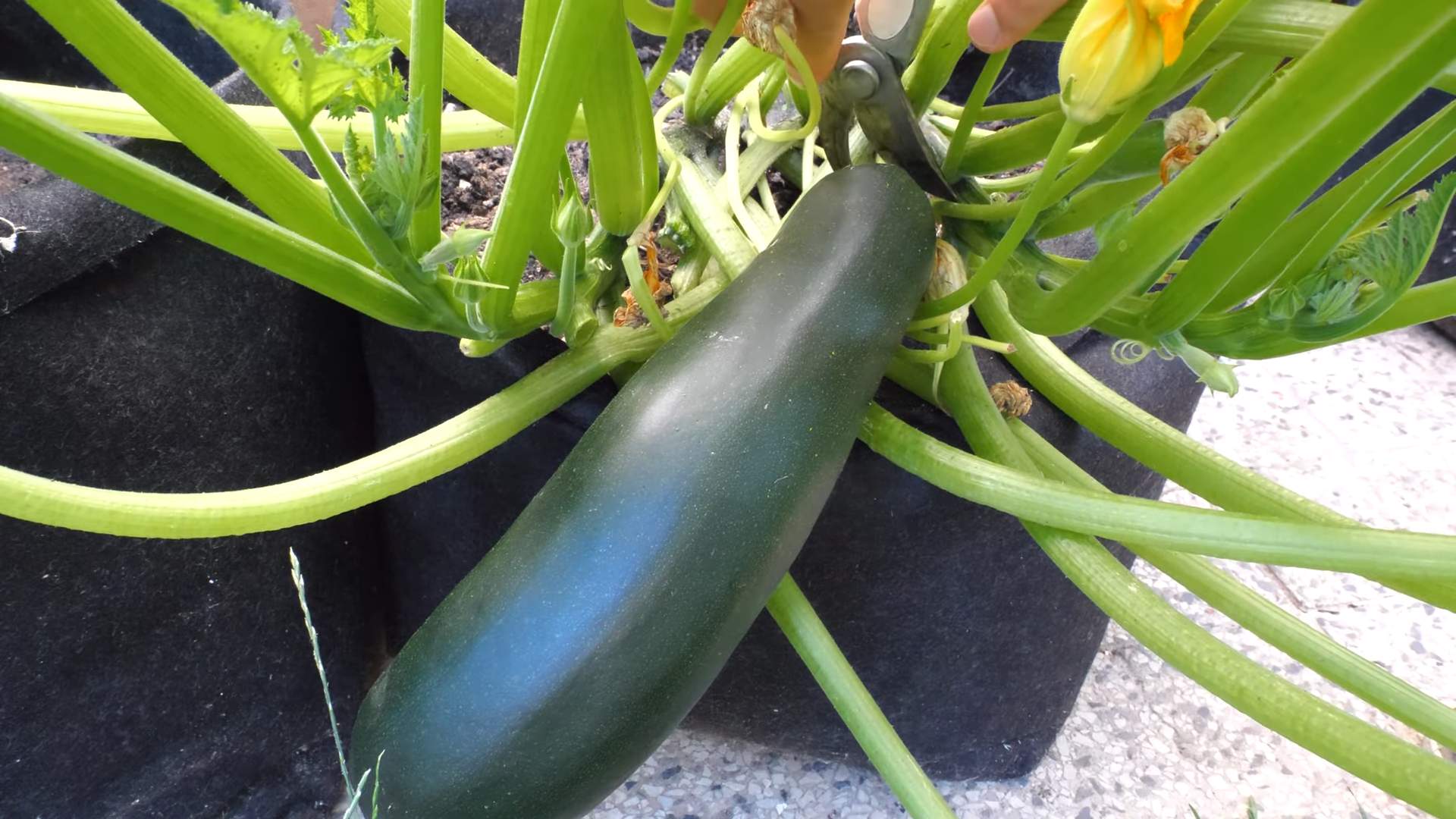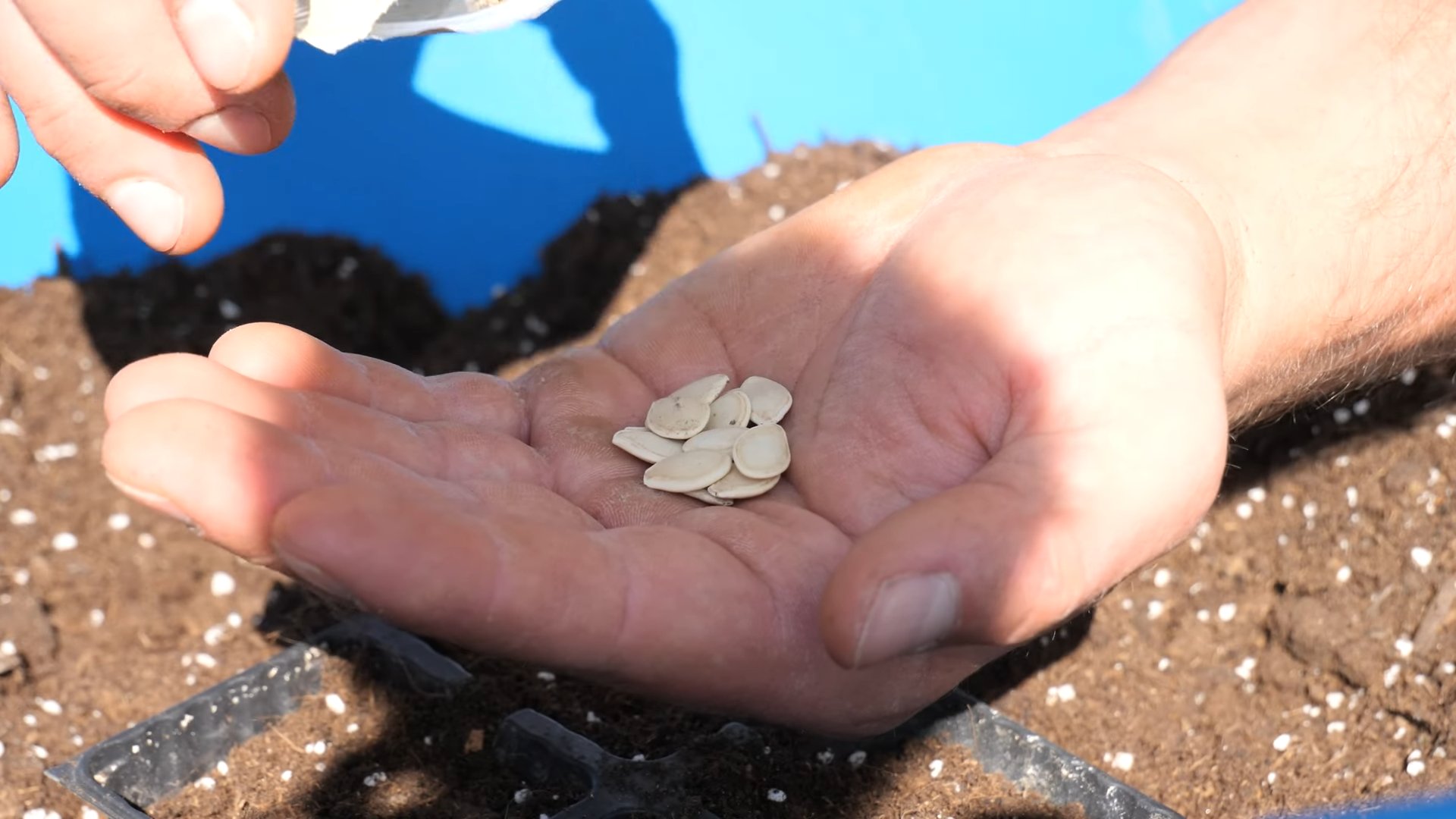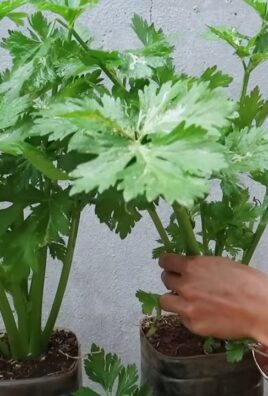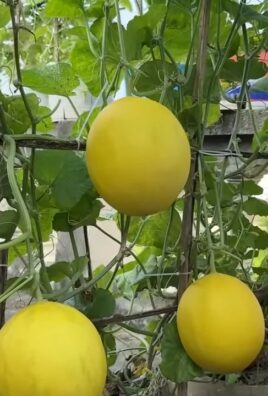Growing Zucchini for Beginners can seem daunting, but trust me, it’s easier than you think! Imagine harvesting baskets overflowing with vibrant green zucchini, ready for delicious summer recipes. Forget those overpriced, often bland, grocery store finds – with a few simple tricks, you can cultivate your own zucchini bounty right in your backyard, balcony, or even a sunny windowsill.
Zucchini, a member of the squash family, has a fascinating history. Originating in the Americas, it wasn’t until Italian immigrants brought it to Europe that the zucchini we know and love today truly flourished. For generations, gardeners have relied on time-tested techniques to maximize their zucchini yields, and I’m excited to share some of those secrets with you.
Why should you learn these DIY zucchini hacks? Well, for starters, homegrown zucchini tastes infinitely better! Plus, it’s incredibly rewarding to nurture a plant from seed to harvest. But more importantly, knowing how to properly care for your zucchini plants can prevent common problems like powdery mildew, blossom end rot, and pest infestations. This article will equip you with the knowledge and confidence to successfully start growing zucchini for beginners, ensuring a plentiful harvest and a whole lot of delicious meals. Let’s get started!

Growing Zucchini: A Beginner’s Guide to Bountiful Harvests
Okay, zucchini lovers! Let’s dive into the wonderful world of growing your own zucchini. Trust me, there’s nothing quite like the satisfaction of harvesting these prolific veggies straight from your garden. This guide is designed for absolute beginners, so don’t worry if you’ve never planted a seed before. I’ll walk you through everything you need to know, from choosing the right variety to dealing with common pests. Get ready for a zucchini explosion!
Choosing Your Zucchini Variety
First things first, let’s talk about zucchini varieties. There are so many to choose from, but here are a few popular and reliable options for beginners:
* Black Beauty: This is a classic, dark green zucchini that’s known for its excellent flavor and productivity. It’s a great all-around choice.
* Costata Romanesco: If you’re looking for something a little different, try this Italian heirloom variety. It has slightly ribbed, light green fruit with a nutty flavor.
* Golden Zucchini: For a pop of color, go for a golden zucchini. They’re just as easy to grow as green varieties and have a mild, sweet flavor.
* Round Zucchini (Eight Ball, One Ball): These are fun, compact varieties perfect for stuffing. They take up less space than traditional zucchini plants.
Consider your space and taste preferences when making your selection. I personally love Black Beauty for its reliability and flavor, but experiment and find what works best for you!
Preparing Your Garden Bed
Zucchini plants are hungry feeders, so preparing your garden bed properly is crucial for a successful harvest. They need plenty of sunlight and well-drained soil.
* Sunlight: Zucchini needs at least 6-8 hours of direct sunlight per day. Choose a location in your garden that gets plenty of sun.
* Soil: Zucchini prefers well-drained, fertile soil with a pH between 6.0 and 7.5. If your soil is heavy clay or sandy, amend it with compost or other organic matter to improve drainage and fertility.
* Space: Zucchini plants can get quite large, so give them plenty of space. Allow at least 2-3 feet between plants. If you’re growing in rows, space the rows 3-4 feet apart.
* Fertilizing: Before planting, work in a generous amount of compost or well-rotted manure into the soil. You can also add a balanced fertilizer, such as 10-10-10, according to the package directions.
Planting Your Zucchini Seeds or Seedlings
You can start zucchini seeds indoors or direct sow them in your garden. I usually prefer direct sowing because it’s less work and the plants tend to be stronger.
* Starting Seeds Indoors (Optional): If you want to get a head start, you can start zucchini seeds indoors 3-4 weeks before the last expected frost. Sow the seeds in peat pots or seed trays filled with seed-starting mix. Keep the soil moist and warm (around 70-80°F). Once the seedlings have a few true leaves, you can transplant them into your garden after the last frost.
* Direct Sowing: Wait until the soil has warmed up to at least 60°F before direct sowing zucchini seeds. Sow the seeds about 1 inch deep and 2-3 feet apart. Water the soil gently and keep it moist until the seeds germinate. Germination usually takes 5-10 days.
* Transplanting Seedlings: If you started your seeds indoors, harden off the seedlings by gradually exposing them to outdoor conditions for a week before transplanting them into your garden. Dig a hole that’s slightly larger than the root ball of the seedling. Gently remove the seedling from its pot and place it in the hole. Backfill with soil and water thoroughly.
Caring for Your Zucchini Plants
Once your zucchini plants are established, they’re relatively easy to care for. Here’s what you need to do:
* Watering: Zucchini plants need consistent watering, especially during hot, dry weather. Water deeply at the base of the plant, avoiding getting the leaves wet. Aim for about 1 inch of water per week.
* Fertilizing: Fertilize your zucchini plants every 2-3 weeks with a balanced fertilizer or compost tea. This will help them produce more fruit.
* Weeding: Keep the area around your zucchini plants free of weeds. Weeds compete with the plants for nutrients and water.
* Mulching: Apply a layer of mulch around your zucchini plants to help retain moisture, suppress weeds, and regulate soil temperature. Straw, wood chips, or shredded leaves are all good options.
* Pollination: Zucchini plants have separate male and female flowers. The female flowers need to be pollinated in order to produce fruit. Bees and other pollinators usually take care of this, but if you’re not seeing much fruit set, you can hand-pollinate the flowers. To hand-pollinate, use a small paintbrush to transfer pollen from the male flower to the female flower.
Dealing with Pests and Diseases
Zucchini plants are generally pest-resistant, but they can be susceptible to a few common problems:
* Squash Vine Borers: These pests can be devastating to zucchini plants. The larvae bore into the stems and kill the plant. Look for small holes in the stems and sawdust-like frass. To prevent squash vine borers, wrap the base of the stems with aluminum foil or netting. You can also inject Bacillus thuringiensis (Bt) into the stems to kill the larvae.
* Squash Bugs: These bugs suck the sap from zucchini leaves, causing them to wilt and die. Handpick the bugs and their eggs (which are usually found on the underside of the leaves) or spray the plants with insecticidal soap.
* Powdery Mildew: This fungal disease causes a white, powdery coating on the leaves. To prevent powdery mildew, water the plants at the base, avoid overcrowding, and provide good air circulation. If you see signs of powdery mildew, spray the plants with a fungicide.
* Aphids: These tiny insects suck the sap from zucchini leaves, causing them to curl and distort. Spray the plants with insecticidal soap or neem oil to control aphids.
Harvesting Your Zucchini
Now for the fun part – harvesting! Zucchini grows quickly, so you’ll need to check your plants regularly.
* When to Harvest: Harvest zucchini when they are young and tender, usually when they are 6-8 inches long. Larger zucchini can be tough and seedy.
* How to Harvest: Use a sharp knife or pruning shears to cut the zucchini from the plant. Be careful not to damage the plant.
* Storage: Store zucchini in the refrigerator for up to a week.
Step-by-Step Instructions: From Seed to Table
Let’s break down the entire process into easy-to-follow steps:
1. Choose Your Variety: Decide which zucchini variety you want to grow based on your preferences and space.
2. Prepare Your Garden Bed: Select a sunny location with well-drained soil. Amend the soil with compost or manure and add a balanced fertilizer.
3. Plant Your Seeds or Seedlings: Direct sow seeds after the last frost or start seeds indoors 3-4 weeks beforehand. Transplant seedlings after hardening them off.
4. Water Regularly: Water deeply at the base of the plant, avoiding getting the leaves wet. Aim for about 1 inch of water per week.
5. Fertilize Every 2-3 Weeks: Use a balanced fertilizer or compost tea to feed your plants.
6. Weed and Mulch: Keep the area around your plants free of weeds and apply a layer of mulch to retain moisture and suppress weeds.
7. Monitor for Pests and Diseases: Check your plants regularly for signs of pests or diseases and take action as needed.
8. Harvest Regularly: Harvest zucchini when they are young and tender, usually when they are 6-8 inches long.
9. Enjoy Your Harvest! Cook your zucchini in your favorite recipes or share it with friends and neighbors.
Troubleshooting Common Zucchini Problems
Even with the best care, you might encounter some problems along the way. Here are a few common issues and how to fix them:
* No Fruit Production: If your zucchini plants are producing flowers but no fruit, it could be due to poor pollination. Try hand-pollinating the flowers or attracting more pollinators to your garden by planting flowers that bees love.
* Yellowing Leaves: Yellowing leaves can be a sign of nutrient deficiency, overwatering, or disease. Check the soil drainage and fertilize your plants if needed.
* Blossom End Rot: This condition causes the ends of the zucchini to rot. It’s usually caused by calcium deficiency or inconsistent watering. Make sure your soil is rich in calcium and water your plants regularly.
*

Conclusion
So, there you have it! Growing zucchini, even for complete beginners, is not only achievable but incredibly rewarding. This DIY trick – starting your zucchini seeds indoors a few weeks before the last frost – is a game-changer. It gives your plants a head start, protecting them from early-season pests and unpredictable weather, ultimately leading to a more abundant and earlier harvest. Think of it as giving your zucchini plants a VIP pass to a thriving life!
Why is this a must-try? Because it significantly increases your chances of success, especially if you live in a region with a shorter growing season. It’s about maximizing your yield and enjoying fresh, homegrown zucchini sooner rather than later. Imagine the satisfaction of harvesting your own zucchini while your neighbors are still waiting for their plants to even flower!
But don’t stop there! Experiment with different zucchini varieties. Try growing classic dark green zucchini, or branch out with yellow varieties like ‘Golden Zucchini’ or even round zucchini like ‘Eight Ball’. Each variety offers a slightly different flavor and texture, adding exciting diversity to your summer meals. You can also explore companion planting. Marigolds, for example, are known to deter pests, while nasturtiums can attract aphids away from your zucchini plants.
Consider also the type of soil you are using. While the DIY trick focuses on the early stages, the soil composition is crucial for the long-term health of your zucchini. Amend your soil with plenty of compost or well-rotted manure to provide the necessary nutrients for vigorous growth. You can even add a slow-release fertilizer at planting time to give your zucchini plants an extra boost.
This DIY trick isn’t just about growing zucchini; it’s about connecting with nature, learning new skills, and enjoying the fruits (or rather, vegetables!) of your labor. It’s about experiencing the joy of nurturing a plant from a tiny seed to a bountiful producer. And let’s be honest, there’s nothing quite like the taste of freshly picked, homegrown zucchini.
We are confident that this simple DIY trick will transform your zucchini growing experience. It’s easy, effective, and incredibly satisfying. So, grab your seeds, get your hands dirty, and prepare for a zucchini bonanza!
Now, we want to hear from you! Have you tried this DIY trick for growing zucchini? What were your results? Do you have any other tips or tricks to share? Head over to the comments section and let us know. Share your experiences, your successes, and even your challenges. Let’s create a community of zucchini enthusiasts and learn from each other. Your insights could be invaluable to other beginners just starting their zucchini growing journey. Don’t be shy – share your zucchini stories! We can’t wait to hear from you and celebrate your gardening triumphs! Let’s all become zucchini growing experts together!
Frequently Asked Questions (FAQ)
Q: How early should I start my zucchini seeds indoors?
A: Generally, you should start your zucchini seeds indoors about 3-4 weeks before the last expected frost in your area. This gives the seedlings enough time to develop a strong root system before being transplanted outdoors. Check your local weather forecasts and historical data to determine the average last frost date for your region. Starting too early can result in leggy, weak seedlings that struggle to adapt to outdoor conditions. Starting too late might mean you miss out on some of the early growing season.
Q: What kind of containers should I use for starting zucchini seeds indoors?
A: You can use a variety of containers, but individual pots or seed starting trays with cells are ideal. This minimizes root disturbance when transplanting. Choose containers that are at least 3-4 inches in diameter to provide enough space for the roots to grow. Biodegradable pots, such as those made from peat or coconut coir, are a great option because you can plant the entire pot directly into the ground, further reducing transplant shock. Make sure the containers have drainage holes to prevent waterlogging, which can lead to root rot.
Q: What type of soil should I use for starting zucchini seeds?
A: Use a high-quality seed starting mix. These mixes are typically lightweight and well-draining, which is essential for healthy seedling development. Avoid using garden soil, as it can be too heavy and may contain pathogens that can harm young plants. Seed starting mixes are specifically formulated to provide the right balance of nutrients and moisture for germinating seeds and developing seedlings. You can find seed starting mixes at most garden centers or online retailers.
Q: How much light do zucchini seedlings need?
A: Zucchini seedlings need plenty of light to grow strong and healthy. Ideally, they should receive at least 6-8 hours of direct sunlight per day. If you don’t have a sunny window, you can use grow lights. Position the grow lights a few inches above the seedlings and adjust the height as the plants grow. Insufficient light can result in leggy, weak seedlings that are more susceptible to disease and pests.
Q: How often should I water zucchini seedlings?
A: Water zucchini seedlings regularly, keeping the soil consistently moist but not waterlogged. Check the soil moisture level daily and water when the top inch of soil feels dry to the touch. Avoid overwatering, as this can lead to root rot. Use a gentle watering can or spray bottle to avoid disturbing the delicate seedlings.
Q: How do I harden off zucchini seedlings before transplanting them outdoors?
A: Hardening off is the process of gradually acclimating seedlings to outdoor conditions before transplanting them into the garden. This helps them adjust to the sun, wind, and temperature fluctuations. Start by placing the seedlings outdoors in a sheltered location for a few hours each day, gradually increasing the amount of time they spend outside over the course of a week or two. Protect them from direct sunlight and strong winds initially. Bring them back indoors at night if temperatures are expected to drop below 50°F (10°C).
Q: When is the best time to transplant zucchini seedlings outdoors?
A: Transplant zucchini seedlings outdoors after the last expected frost and when the soil has warmed up to at least 60°F (15°C). Choose a sunny location with well-drained soil. Space the plants about 2-3 feet apart to allow for adequate growth. Water the seedlings thoroughly after transplanting.
Q: What are some common pests and diseases that affect zucchini plants?
A: Common pests that affect zucchini plants include squash bugs, squash vine borers, and aphids. Common diseases include powdery mildew and blossom end rot. Monitor your plants regularly for signs of pests or diseases and take appropriate action if necessary. Organic pest control methods, such as using insecticidal soap or neem oil, can be effective. Ensure good air circulation around the plants to help prevent fungal diseases.
Q: How often should I fertilize zucchini plants?
A: Fertilize zucchini plants every 2-3 weeks with a balanced fertilizer. You can use a liquid fertilizer or a slow-release granular fertilizer. Follow the instructions on the fertilizer packaging for application rates. Avoid over-fertilizing, as this can lead to excessive foliage growth and reduced fruit production.
Q: How do I know when zucchini is ready to harvest?
A: Zucchini is typically ready to harvest when it is about 6-8 inches long. The skin should be smooth and tender. Use a sharp knife to cut the zucchini from the plant, leaving a short stem attached. Harvest zucchini regularly to encourage continued production. Overripe zucchini can become tough and seedy.




Leave a Comment